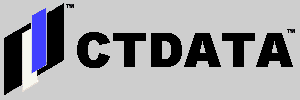Learning What it Takes to Edit Digital Photos on Linux
Dave Aiello wrote, "I have spoken a number of times of CTDATA's commitment to the Linux platform. However, our actual use often trails that commitment."
"A case in point is digital photo editing. For a couple of years, I have successfully used a Compaq Armada 6500 running Windows NT 4.0 and PaintShop Pro from JASC Software. This solution has served us well in the past, but now I use a Dell Inspiron 7500 with RedHat Linux 6.2 as my personal machine. What now?"
"Anyone who is paying attention to the Linux market knows that GIMP (the GNU Image Manipulation Program) is a good alternative for image manipulation. But, actually using it productively is not that simple. In order to do 'round-trip editing,' I need to be able to mount the media that my digital camera uses to record images, manipulate those images, transfer them to our Web Publishing platform, and then write the Web Page content. The only really difficult part, for an inexperienced Linux user, is mounting the file system."
"I figured out many of the technical issues associated with doing this last night, in the process of producing RCNJ Spring Dinner Meeting Features Bud Peterson for our Web Site RCNJ.org. Read on for more details about the things I learned...."
Dave Aiello continued:
What I wanted to do from the outset was to eject the Psion DACOM 56k Gold Card which has occupied the top PC card slot since I received the Inspiron, and to replace it with my 64M Compact Flash Card in a PC card adapter. I got a lot of good ideas of how to do this by referring to Linux for Your Laptop by Bill Ball.
I found the section "PCMCIA and Card Services", beginning on page 137, particularly helpful. The "cardinfo" X Windows application, which was explained in the book, turned out to be very useful. The biggest issue I had with the way this section of the book is written, it does not clearly state that cardinfo must be run with root privledges if you want to eject the modem.
Once I did this, I was able to insert the Compact Flash card. This gave me a device called /dev/hde1. From there, I attempted to use this mount command:
mount -t vfat /dev/hde1 /mnt/flash
(This is documented in Linux for Your Laptop, Chapter 12, "Data Synchronization", on page 278.) The problem was that I did not have a mount point called /mnt/flash, and I did not know how to create one. I ended up changing directories using "cd /mnt" and trying "mkdir flash". This worked when I was logged in as root.
From there, I was able to issue the mount command described above. Again, I had to be root. Once I was done with the Compact Flash Card, I had to issue the following commands:
umount /mnt/flash
cardctl eject 1
Since I do not do most of my work as the root user, I could not mount, umount, and eject the Compact Flash Card through Gnome. When I tried to do it, it told me that the device was busy, or it was not found in /etc/fstab. I vaguely remembered hearing about fstab, but I could not find any reference to it in the "Linux for Your Laptop".
I found some useful documentation on /etc/fstab in Chapter 6 of Running Linux (3rd Edition) from O'Reilly. The relevant material is on page 166, including a brief explanation on how to create a mount point.
To make it clear, I am interested in making /dev/hde1 user mountable. I have not done and tested this, but when I do it, I will update this story.
Looking back on the entire process, I always avoided dealing with the more obscure aspects of UNIX / Linux file systems, including mount points. However, when I found I really needed to do something practical with them, I found that the concepts were weird, but they were consistant. The only truly inexplicable aspect of the processes, in my opinion was the fact that the unmount command is called "umount".
